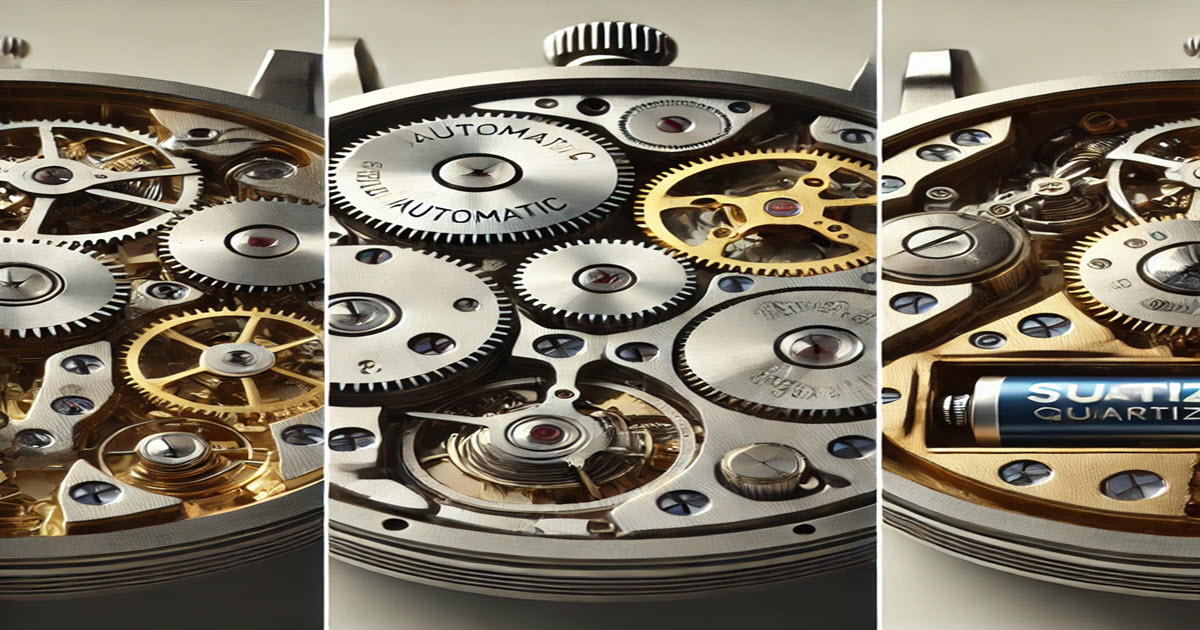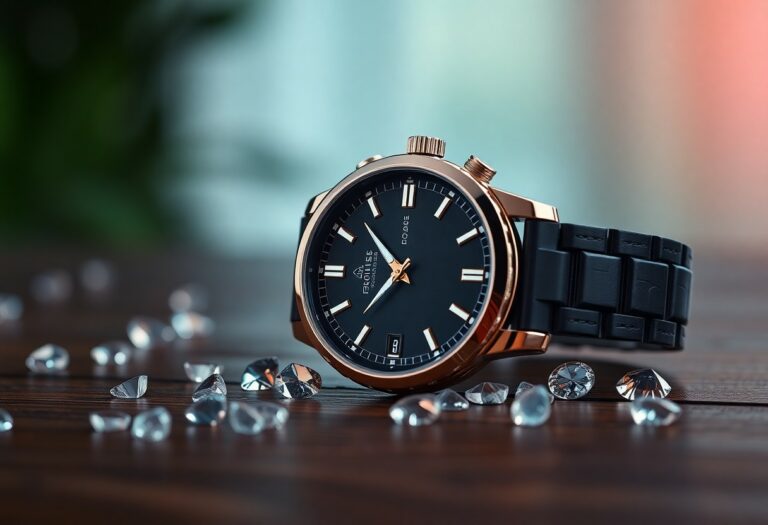A watch offers more than simply checking the time. It has many advances of arts, technology, and industry coming together over a period of time in history. Movements are the heart of each and every watch, it is the component that ensures the time is accurate and reasonable for its many functions.
For an admirer or a buyer, it’s essential to recognize the differences between while appreciating, investing or learning about them as quartz, mechanical and automatic makes. Each movement has a history of its own, along with several benefits, and distinguishing features.
Here, we help you tackle each form of movement under the lens, and recommend to you which among them suit best for you based on your likings, day-to-day life and your interests in timepieces.
What Are Mechanical Movements?
The very first type of watch mechanism are mechanical movements. These watches function without the need of batteries and electronics. They are powered by a meticulous coordination of tiny gears, springs, and other timekeeping components.
They highlight the precision and skills of a watchmaker that had gone into crafting the timepiece. Thus, appealing to several people for the history eye catching mythos, intricacy and precision that went into creating it fused with art.
How Do Mechanical Movements Work?
The mainspring is the heart of a mechanical watch. The mainspring accumulates energy whenever a wearer winds the watch. This energy is released gradually via a series of gears called the gear train.
The escapement controls the release of this energy so that the hands of the watch move at the right speed. The balance wheel acts as a tiny pendulum that oscillates divides time into equal segments.
In spite of the absence of electronic aid, this intricate ballet of elements allows a mechanical watch to perform remarkably accurate timekeeping.
Key Characteristics of Mechanical Movements
- Spring Power: Mechanical watches require manual winding to power them.
- Durability: With appropriate care and servicing, mechanical watches can sustain for many generations.
- Artistry: The exposed portion of the movement visible through the transparent case back is often lavishly adorned, remarkable of horological art.
- Heritage: Great collectors, enthusiasts and horologists appreciate the craftsmanship behind mechanical movements as it represents the traditional roots of watchmaking.
Who Are Mechanical Watches for?
Those who value artistry, crafted design, and the tradition of winding a watch every day would appreciate mechanical watches. They make for ideal gifts for collectors, connoisseurs, and anyone who cherishes heritage over modern-day conveniences.
Automatic Movements
What Are Automatic Movements?
Automatic or self-winding movements are the latest developments in mechanical watches. They work on the same principles as mechanical watches but with one great advantage – they automatically wind up using the wearer’s wrist movements.
This advancement gives an automatic watch the precision of traditional watchmaking, while ensuring convenience for everyday use.
How Do Automatic Movements Work?
As with all automatic watches, a rotor – which is actually a semi-circular piece of metal whose weight lies on the axis of the watch’s movement – winds the mainspring owing to the wrist movements. This eliminates the need for frequent manual winding, provided the watch is regularly worn.
The rest of the mechanism operates properly like a mechanical clock. It uses an intricate system with gears, a clock’s part serving as a time divider (an escapement), and the balance wheel that governs the timing system.
Key Characteristics of Automatic Movements
- Self-Winding: The mechanical movement of the watch itself.
- Power Reserve: The capabilities of automatic timepieces varied; some can work constantly for 24 to 48 hours when not worn. Premium products can exceed 70 hours or more.
- Craftsmanship: Design and the intricacy of the mechanics is one prominent feature with these watches, alongside more traditional decor.
- Low Maintenance: Automatic watches do not require regular manual winding (even when worn daily) because they are self-winding.
Who Should Buy Automatic Watches?
People who appreciate fine craftsmanship will find automatic watches best suited for their tastes because they don’t require winding daily. They also work well for casual wearers as well as those who enjoy mechanical artistry without the burden of additional upkeep.
Quartz Movements
What Are Quartz Movements?
The introduction of quartz movements marked a significant development in timepieces. With the emergence of quartz watches in the 1960s, the use of an electronic oscillator handled by a quartz crystal ensured accurate timekeeping.
By employing a tiny battery, quartz wristwatches offer unrivaled precision, efficiency, and low servicing requirements.
How Do Quartz Movements Work?
Current from the battery is sent to the quartz crystal, which subsequently vibrates at one of its resonant frequencies; this particular process happens 32,768 times a second. Furthermore, the vibrations are converted into electrical pulses by the integrated circuit.
A particular motor is activated by these pulses and, in turn, causes the hands of the watch to move. The precision of this mechanism also guarantees quartz watches will, with very few exceptions, only lose a few seconds of accuracy in a month.
Key Characteristics of Quartz Movements:
- High Accuracy: The level of accuracy in quartz watches is different when compared to mechanical or automatic watches.
- Supported by a battery: Quartz watches have a designated battery life of 2 to 5 years.
- Require little maintenance: In comparison to other watches, quartz watches only require battery changes.
- Cost-effective: The affordability of quartz watches is a result of the low manufacturing cost of their movements.
Why Should You Buy a Quartz Watch?
To keep their quartz watches accurate and up to date, users who prioritize reliability, minimal maintenance, and casual attendance would best benefit from quartz watches. Additionally, professionals looking for budget-friendly elegant watches would find quartz watches beneficial.
Selecting the Appropriate Movement
Whether mechanical, automatic, or quartz movements suit you is a matter of taste and lifestyle. All the movements differ in several features whether its usefulness or design, tailored to meet different preferences.
- Select Mechanical Watches for intricate designs, traditional craftsmanship, and routines that involve manual winding. These watches serve practical purposes, and also make great souvenirs.
- Select Automatic Watches for sophisticated everyday wear and self-winding convenience. You still get mechanical engineering while wearing one.
- Select Quartz Watches for effortless upkeep and all-around practicality. They’re well designed for modern lifestyles, and you can wear them without having to think much.
Conclusion
From the very first timepieces created, watches have served not as only tools to measure time, but as manifestations of history, style, and craftsmanship. Having a basic understanding of the differences among mechanical, automatic, and quartz movements will make your next purchase more informed and appreciated, as it enhances your understanding of the art of watchmaking.
Whether it is a mechanical watch with intricate gears that catch your eye, an automatic with its effortless charm, or a quartz movement watch boasting reliable precision, there surely is a timepiece waiting to be a part of your journey.
To us at Evolution Watches, all watch movements tell fascinating stories. Through our blend of timeless tradition and modern innovation, we invite you to explore our collection to find the piece that reflects and fulfills the values you hold dear




